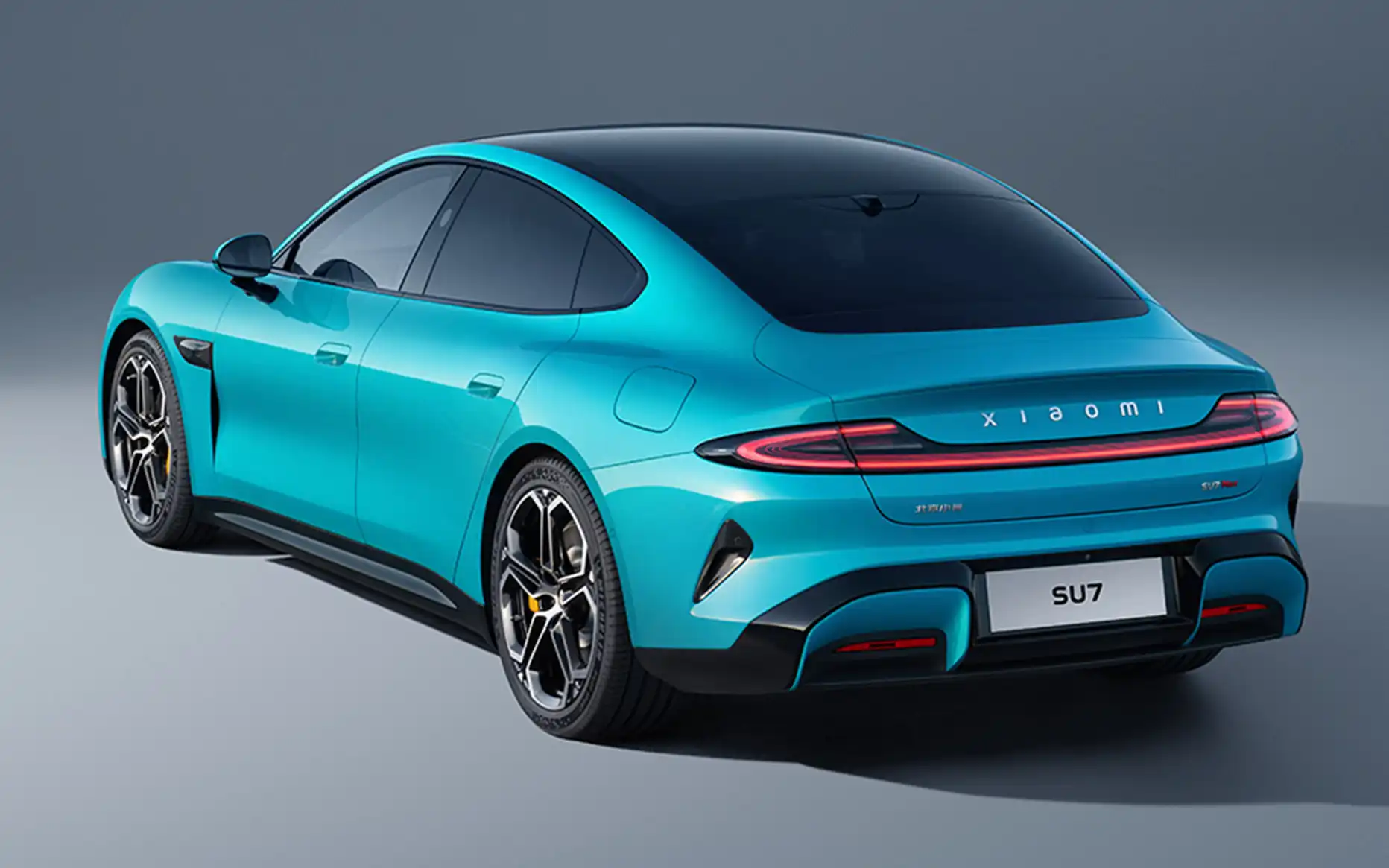Xiaomi, widely recognized for its smartphones, has recently unveiled its first electric vehicle, the Xiaomi SU7, marking a significant foray into the automotive sector.
The SU7, presented at an event in Beijing, is an electric sedan based on Xiaomi’s unique Modena Architecture with HyperEngine electric motors. Notably, the vehicle comes in two versions: the dual-motor all-wheel-drive SU7 Max and the single-motor rear-wheel-drive SU7.
The design of the SU7, which exhibits elements of both the Porsche Taycan and Tesla Model 3, was led by Sawyer Li, a former designer at BMW.
The car’s exterior is available in three colors: Aqua Blue, Mineral Gray, and Verdant Green, each symbolizing a different aspect of nature. It features a long wheelbase, short overhangs, water drop-shaped headlights, and halo-shaped taillights, contributing to its sporty and futuristic look.
Also, the car boasts an impressively low drag coefficient of 0.195 Cd, the lowest among production vehicles, and its dimensions are quite spacious, comparable to a BMW 5 Series.
Performance-wise, the SU7 Max variant is particularly noteworthy, offering a powerful dual-motor all-wheel-drive system that delivers 673 horsepower and an acceleration time of just 2.78 seconds from 0-100 km/h.
The regular version, with a single-motor rear-wheel drive, still provides a robust performance with a 5.28-second acceleration time.
The Max version stands out with its 800km range on the China Light-Duty Vehicle Test Cycle, thanks to its 101kWh CATL Kirin battery. It also features super-fast charging capabilities, gaining significant range within minutes.
Inside the SU7, passengers are greeted with a luxurious and spacious cabin, equipped with a panoramic view, a large touchscreen, a comprehensive HUD, and a high-quality sound system. The car is also designed with a focus on safety, featuring an armored cage-type steel-aluminum hybrid body, multiple airbags, and advanced active safety features.
Xiaomi has integrated its technology into the SU7, equipping it with the HyperOS system, powered by a Qualcomm Snapdragon chip. This system allows seamless connectivity with various smart devices, including those from the Xiaomi Home IoT ecosystem.
The car also features Xiaomi Pilot, an advanced self-driving mode powered by Nvidia Orin-X chips, equipped with lidar, radars, HD cameras, and ultrasonic sensors.
The SU7 is still in the testing phase and is expected to officially launch in the first half of 2024.
While the pricing details have not yet been disclosed, Xiaomi’s CEO Lei Jun has hinted that the cost will be high but justified. Xiaomi’s entry into the electric vehicle market is part of its broader strategy to diversify beyond smartphones and establish itself as a major player in the automotive industry.
For more detailed information, you can refer to the original articles on Autoblog, Reuters, Yahoo, and Gizmochina.











